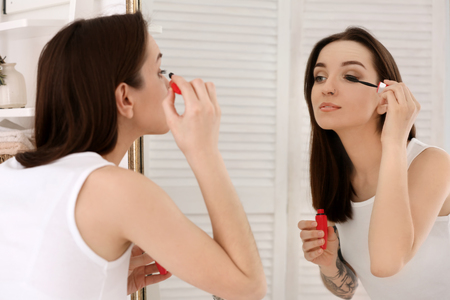Introduction: A Brief History of British Beauty
British beauty routines have always reflected the nation’s unique blend of tradition and innovation. From the powdered wigs of Georgian society to the mod makeup looks that defined the swinging sixties, beauty in the UK has evolved alongside social shifts and cultural milestones. While classic staples like cold creams and rosewater tonics have held their place on vanities for centuries, it wasn’t until more recent decades that prepping and finishing products—such as primers and setting sprays—entered the mainstream. The gradual introduction of these products mirrored a growing desire among British beauty enthusiasts for longer-lasting, flawless looks that could withstand the unpredictable British weather and fast-paced city life. Today, prepping and finishing steps are integral to any British makeup routine, but their journey into everyday use is a fascinating reflection of changing trends, scientific advancements, and the ever-evolving definition of beauty across the UK.
2. Primers in the Early Days: From Simple Bases to Sophisticated Formulas
The evolution of primers in the British beauty market tells a fascinating story that mirrors changes in cosmetic science and consumer expectations. In the early days, British women relied on minimal base products—often limited to cold creams or basic moisturisers—to prepare their skin for makeup application. These rudimentary primers were far from today’s sophisticated offerings but laid the groundwork for modern innovations.
Origins and Initial Ingredients
British beauty counters of the mid-20th century typically stocked simple “base creams,” which served as both skincare and makeup prep. These products often featured straightforward ingredients such as:
| Ingredient | Function | Era |
|---|---|---|
| Petrolatum (Vaseline) | Moisturises & creates barrier | 1940s-1960s |
| Lanolins | Softens & smooths skin | 1950s-1970s |
| Glycerine | Hydrates skin surface | 1960s onwards |
| Zinc Oxide | Mild mattifying effect | Early 1970s |
Perceptions and Expectations in Britain
The primary goal of these early formulations was to create a smoother canvas for face powder or foundation. In post-war Britain, makeup was seen as both a luxury and a necessity for those keen to present a polished image at work or social gatherings. However, few expected their “priming” product to prolong wear time or provide any advanced skincare benefits—this was an era where efficacy was measured by how well your powder sat atop your skin, rather than longevity or pore-blurring magic.
Cultural Context and Shifts in Demand
The swinging sixties brought greater experimentation with colour cosmetics, leading to increased demand for products that could help makeup adhere better and last longer under the notoriously damp British weather. Yet, it wasn’t until later decades that the concept of a dedicated primer truly took hold, with British brands beginning to innovate beyond basic emollients and simple barrier creams.

3. Setting Sprays Take Centre Stage: From Novelty to Necessity
Setting sprays, once seen as a novelty imported from across the pond, have swiftly become an integral part of British beauty routines. Their ascent in popularity began around the late 2000s, coinciding with the rise of long-wear makeup trends and the proliferation of beauty influencers on social media. Initially, these sprays promised a photo-ready finish and longer-lasting makeup—a claim that piqued the curiosity of British consumers accustomed to unpredictable weather and frequent commutes.
The earliest setting spray formulations were often simple blends of water, alcohol, and film-forming polymers, designed to “lock” makeup in place. However, these initial offerings sometimes left skin feeling tight or dry—hardly ideal for those with sensitive or dehydrated complexions, which are common concerns given Britain’s chilly winds and central heating. As demand grew, brands began innovating with hydrating ingredients like glycerin and aloe vera, catering specifically to skin types prone to dryness or irritation.
What truly propelled setting sprays into the spotlight was their unique ability to tackle the challenges posed by the British climate. The UK’s famously damp conditions can cause foundation and blush to slide off by midday, while sudden spells of humidity may encourage excess shine. Setting sprays became a practical solution—creating a flexible shield that helped makeup endure both drizzle and heatwaves alike. It wasn’t long before these mists transitioned from backstage secrets to everyday essentials, solidifying their place in the British beauty arsenal alongside classic powders and blotting papers.
4. Ingredient Innovation: What’s in Today’s Primers & Setting Sprays
British beauty has always prided itself on balancing tradition with innovation, and nowhere is this more evident than in the ingredient lists of modern primers and setting sprays. Over the past decade, both UK-based brands and those distributed within the EU have been subject to stringent regulations that shape what goes into our beauty staples. This has led to a wave of cutting-edge, skin-friendly formulations designed for efficacy, safety, and sustainability.
Breaking Down Modern Ingredient Lists
Today’s primers and setting sprays are meticulously crafted to do far more than just prep or lock in makeup. Let’s examine some of the most common categories of ingredients now found in British-market formulas:
| Ingredient Category | Purpose | Example (British/EU-compliant) | Benefit |
|---|---|---|---|
| Silicones | Smooths skin texture; creates barrier | Dimethicone, Cyclopentasiloxane | Blurs pores & fine lines; prolongs wear |
| Hydrators | Moisurises & plumps skin | Glycerin, Sodium Hyaluronate, Squalane | Maintains hydration; prevents cakiness |
| Antioxidants | Protects against environmental stressors | Vitamin E (Tocopherol), Green Tea Extract | Shields from pollution; soothes irritation |
| Pore Refiners & Oil Controllers | Minimises shine & controls sebum | Niacinamide, Silica, Zinc PCA | Keeps complexion matte; refines texture |
| Film Formers & Fixatives | Cements makeup in place; enhances longevity | Acrylates Copolymer, PVP (Polyvinylpyrrolidone) | Sets makeup without stiffness or residue |
| Naturally-Derived Actives | Adds skincare benefits; appeals to ‘clean’ market | Aloe Vera, Chamomile Extract, Witch Hazel Water | Calms skin; suits sensitive types; eco-friendly profile |
| Fragrance-Free Alternatives | Cater to sensitive skin; allergen reduction | N/A (absence of synthetic fragrances) | Reduces risk of irritation; suitable for all skin types |
The British Approach: Compliance Meets Innovation
The UK and wider EU remain at the forefront of cosmetic safety regulation. Ingredients like parabens and certain phthalates are strictly controlled or banned altogether—prompting local brands to innovate with alternatives that maintain performance. For instance, new-generation film-formers derived from sugarcane or natural gums are increasingly replacing older synthetic polymers.
Sustainability and Skin Health at the Forefront
The modern British consumer expects products to be both effective and ethically formulated. As such, vegan collagen boosters, responsibly sourced botanicals, and biodegradable fixatives are making their way into ingredient decks. This not only aligns with UK environmental targets but also meets rising demand for conscious beauty.
Your Takeaway: What These Ingredients Mean for Your Routine
If you’re shopping for a primer or setting spray in Britain today, expect a blend of performance-driven synthetics and naturally-derived actives—each carefully chosen for both compliance and efficacy. Always check labels for hero ingredients tailored to your skin concerns (hydration, oil control, soothing) and don’t hesitate to choose fragrance-free options if you have sensitivities. The evolution in British beauty means there’s now a formulation for every preference and need.
5. Cultural Shifts: The British Approach to Longwear Beauty
British beauty culture has always been defined by a blend of understated elegance and practicality, and these sensibilities have directly influenced the evolution of primers and setting sprays. Social trends in the UK have long favoured a polished but natural appearance—think dewy complexions over heavy contouring, and subtle radiance instead of bold, high-glam looks often seen elsewhere. This preference is mirrored in product choices: British consumers tend to seek formulas that enhance skin’s natural texture rather than mask it, prioritising lightweight, breathable primers and setting sprays that promise longevity without cakiness. Local lifestyles also play a crucial role; with the famously unpredictable British weather, makeup longevity isn’t just about all-day wear but also about standing up to drizzle, humidity, and blustery winds. As daily commutes involve walking or cycling through the city, products must resist transfer and keep makeup fresh from morning coffee runs to after-work gatherings. Furthermore, British sensibilities value discretion—makeup should look effortless and feel comfortable. This has led to innovations such as hydrating mists and mattifying primers with skincare benefits, catering to those who want their makeup to last but remain virtually undetectable. The rise of wellness culture and a growing appreciation for authenticity have further pushed brands to develop setting sprays infused with botanical extracts and primers enriched with skin-loving ingredients like niacinamide and hyaluronic acid. In essence, the modern British approach to longwear beauty celebrates resilience and refinement—a testament to how cultural shifts continually shape product innovation and consumer expectations.
6. Eco-Conscious & Inclusive Beauty: The Next Chapter
The evolution of primers and setting sprays in the UK isn’t just about improved formulas and longevity—it’s also about values that resonate with modern British beauty lovers. Sustainability is now front and centre, with brands making conscious decisions to minimise their environmental impact. You’ll spot refillable packaging, recyclable bottles, and water-saving formulations gracing the shelves of Boots and Selfridges alike. This eco-aware approach extends to ingredient lists too: gone are the days when primers were packed with microplastics or setting sprays included unnecessary synthetic fragrances. Instead, expect to see responsibly sourced botanicals—like British-grown chamomile or seaweed—and biodegradable polymers that help you look polished without harming the planet.
Equally important is the cruelty-free movement, a cause that’s deeply rooted in British consumer culture. From high-street favourites like Barry M to luxury icons such as Charlotte Tilbury, many brands proudly display Leaping Bunny certification or similar assurances on their primers and setting sprays. For those committed to vegan beauty, it’s easier than ever to find silicone-based blurring primers or hydrating mists that contain no animal-derived ingredients whatsoever.
Inclusivity is also shaping the future of British beauty. Contemporary ranges feature an expansive variety of shades and finishes designed for every skin tone—from porcelain to rich ebony. Brands are actively collaborating with local makeup artists and influencers from diverse backgrounds to ensure their shade selection truly reflects Britain’s multicultural society. Hydrating setting sprays formulated for dry skin, mattifying options for oily complexions, and illuminating primers for all undertones—these aren’t just marketing buzzwords but real solutions based on feedback from Britain’s beauty community.
Ultimately, the new generation of British primers and setting sprays does more than just keep your look in place—they champion values that matter. When you reach for your next bottle, you’re not just investing in your makeup routine; you’re supporting a movement towards ethical, inclusive, and eco-conscious beauty across the UK.
7. Conclusion: What’s Next for British Primers & Setting Sprays?
The journey of primers and setting sprays in the UK has been a remarkable reflection of both scientific innovation and evolving consumer values. Looking ahead, it’s clear that British beauty enthusiasts will continue to demand more than just longevity from their base products—they’ll seek formulas that offer genuine skincare benefits, environmental responsibility, and inclusivity across skin tones and types.
Future Innovations: Expect to see an even greater fusion of skincare and makeup in future primer and setting spray launches. Ingredients like niacinamide, peptides, and adaptogens may become staples, offering targeted solutions such as calming inflammation or blurring imperfections while supporting skin health. Texture innovation—think weightless mists with micro-encapsulation technology—could deliver actives more effectively without disrupting makeup.
Consumer Expectations: The British market is increasingly savvy about ingredient lists and sustainability credentials. There’s growing demand for cruelty-free, vegan, and recyclable packaging options. Consumers are also seeking transparency—brands that clearly communicate the purpose of each ingredient and back up claims with real science will be trusted.
Industry Direction: With social media driving trends faster than ever, expect UK brands to respond rapidly to global beauty conversations while maintaining a distinctively British sensibility: understated elegance, subtle radiance, and practicality for changeable weather. There may also be a rise in bespoke formulations—primers and setting sprays tailored to individual needs via online consultations or AI-driven quizzes.
In summary, the future of British primers and setting sprays is bright, innovative, and deeply attuned to the needs of local consumers. Whether you’re after a glowy finish for afternoon tea or all-day staying power on the London Underground, the next wave of products promises to deliver more than ever before.

